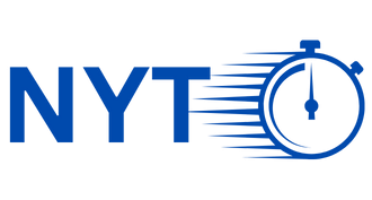Unleashing potential in teams and organizations begins with ensuring people feel free to be their best. Many mentoring programs, stretch assignments, and performance appraisals focus on increasing what someone can do.
Talent consulting firms bring broad industry and specialized knowledge to solve problems faster than internal HR leaders could alone. They also have resource scalability that saves money on hiring additional full-time consultants.
Transparency
Transparency is the quality of being clear or visible. It also means “the state of being open or accessible.” The word transparency comes from the Latin verb transparent, which translates to “to show through” or, more commonly, “to appear.” A slide projector used for displaying images is often called a transparency.
Transparent businesses foster strong manager/employee relationships, leading to higher trust and engagement. These companies have bottom-up communication channels that allow them to identify problems and take quick action to fix them.
For example, when a consulting talent firm is transparent with its employees about what projects they are assigned and how those projects relate to the company’s vision, it gives employees a sense of value and purpose in their work. This drives performance and retention.
Transparency in Performance
Transparency can be a powerful motivational tool but must be balanced with trust. If employees feel like they are constantly being monitored, productivity suffers. It is essential to provide regular check-ins and feedback but never overbearing or micromanaging.
Providing transparent performance feedback is one of the best ways to motivate employees to meet and exceed their goals. It is also a great way to build engagement and trust in your organization.
One of the most common excuses for not being more transparent is that managers are afraid they will overestimate how accurately their employees understand their feedback. Their research showed that educating managers on how their feedback may need to be more transparent to their employees helped reduce this problem. This “accuracy motivation” intervention is a simple but effective solution to transparency illusions.
Accountability
Accountability is a core business concept that has evolved to include a new lexicon of metrics and technology-centered improvement. For professional services organizations, these new metrics can help address the challenges caused by shrinking talent pools, including regrettable turnover and missed opportunities to deliver value to clients.
Consulting firms like Canopy Advisory Group are casting their nets more comprehensive than ever to find the talent needed to fill gaps. They no longer rely on the same recruiting practices used to filter for specific skills and degrees. Instead, they “look for talent everywhere” and ignore org charts. This can create a culture of innovation, allowing teams to reach their full potential. However, it takes a commitment from everyone involved to make it happen. The key is to define what success looks like for each team member.
Transparency in Compensation
In a world where salary transparency is becoming the norm, consulting talent firms must take steps to communicate their compensation structures to employees. Whether that is explaining their pay philosophy, providing salary ranges for each position, or outlining policies for raises.
A transparent approach helps close the gender and racial pay gaps while promoting trust that all roles are equitably valued. However, it is not a one-time effort: It requires consistent communication and ongoing salary research to ensure that the company’s policies remain fair and equitable.
The push for pay transparency also can change how professionals think about their careers and financial well-being. When companies embrace transparency, they can help people plan for the future and feel more satisfied in their work.
Transparency in Training
With 11 million job openings at the end of 2022, many employees are eager to work for firms that value their trust. Leaders can build transparency by keeping employees in the loop, sharing information that helps them perform better, and inviting honest feedback.
Providing clear expectations and training helps employees feel more confident about their work. They will be more likely to tackle challenges without fear of the boss reprimanding them. Team members can discuss a project openly and find solutions when it is in trouble.
Talent acquisition teams need to be transparent about their hiring process, including any tests and interview questions. They can also be fine with candidates who are not hired, showing they appreciate their time and explain why another candidate was chosen.






